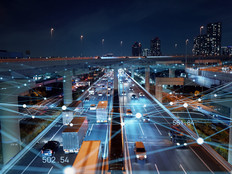As natural disasters continue to increase, the threat to lives and property worldwide also continues to grow. In fact, each year, the United States averages about 10,000 thunderstorms, 5,000 floods, 1,300 tornadoes and two Atlantic hurricanes, as well as widespread droughts and wildfires, according to the National Oceanic and Atmospheric Administration.
These annual climate events cause an average of $15 billion in damage per year and approximately 650 deaths, NOAA estimates. Any steps we can take as a society to gain access to real-time data and improve situational awareness to mitigate the effects of natural disasters by acting sooner is critical for the survival of our planet and its people.
Using Tech to Prepare for Floods and Prevent Disaster
In the U.S. alone, 23.7 million properties are at risk for flooding, according to FEMA. With such staggering data, it is important to put technologies and analytics in place to reduce potential harm and stay ahead of the threat of recurring floods as they evolve.
This is critical when you consider just how fast water levels rise with little to no warning. IoT solutions incorporating low-power, wide-area (LPWA) networks and data analytics solutions can address these complex challenges head-on.
On top of preparations taken by communities to enforce zoning, flood planning and building regulations, deploying environmental sensors and analytics to measure wind, water levels and tides is a great way to better understand the environment and how particular areas react to heavy rain and winds.
The real-time data that comes from the deployment of these sensors can offer community officials much deeper insight into identifying problem areas, enable them to act sooner to protect infrastructure and community, and help them correct problems moving forward.
Matched with the funds put in place to ensure communal safety during these events, IoT-enabled flood sensor networks offer visibility into real-time data on when and where roads are flooded, how deep the water may be and how the conditions are changing. While IoT solutions don’t have the power to ultimately stop floods in their entirety, monitoring data in real time can help communities reduce response time so they can minimize costly damage.
RELATED: How will 5G enable new IoT capabilities for smart cities?
Cities Can Use IoT to Monitor Air Pollution
Air pollution negatively impacts the health of those living across the globe. It also costs the U.S. roughly 5 percent of its yearly gross domestic product in damage of nearly $800 billion, according to Stanford University.
With air pollution correlating to a wide range of medical conditions and environmental problems, it is important for communities to put in place monitoring solutions that comprise sensors and gateways embedded with long-range, low-power IoT technology, an intelligent LPWA network and advanced analytics. With these technologies in place, communities can better measure air quality and provide the type of data necessary to drive change for their citizens.
Using these air pollution monitoring systems, the gateways can send information on local air pollution to networks where streaming data can then be analyzed in real time to identify zones of concern and provide recommendations.
With real-time information regarding air quality levels throughout a community, including alerts and pollution patterns, these IoT solutions can also measure the effectiveness of air quality programs in real time so that local officials can replicate or improve programs in other problem areas. Funding for grants and activities related to air quality monitoring is a critical step toward prevention, reduction and control of air pollution amid natural disasters and other harmful events affecting the air we breathe.
States, local governments and tribes must have plans in place to prepare and respond to complex challenges affecting communities across the country. Natural disasters can destroy businesses and homes and put citizens at serious risk.
The funds from the American Rescue Plan Act could enable communities to invest in emergency response technologies such as IoT-enabled sensors and advanced analytics, which offer real-time insights into how to prevent and respond to the effects of local, national and global disasters.
Investing in emerging technologies as part of preparedness plans not only helps steer communities away from harm but also ensures that those affected are properly cared for.
MORE FROM STATETECH: How will smart city tech enhance community safety?











